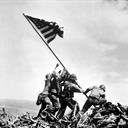When did the Battle of Narva during World War II occur?
The Battle of Narva was a military campaign between the German Army Detachment "Narwa" and the Soviet Leningrad Front fought for possession of the strategically important Narva Isthmus on 2 February – 10 August 1944 during World War II.
The campaign took place in the northern section of the Eastern Front and consisted of two major phases: the Battle for Narva Bridgehead (February to July 1944) and the Battle of Tannenberg Line (July–August 1944). The Soviet Kingisepp–Gdov Offensive and Narva Offensives (15–28 February, 1–4 March and 18–24 March) were part of the Red Army Winter Spring Campaign of 1944.
Following Joseph Stalin's "Broad Front" strategy, these battles coincided with the Dnieper–Carpathian Offensive (December 1943 – April 1944) and the Lvov–Sandomierz Offensive (July–August 1944). A number of foreign volunteers and local Estonian conscripts participated in the battle as part of the German forces. By giving its support to the illegal German conscription call, the underground National Committee of the Republic of Estonia had hoped to recreate a national army and restore the independence of the country.
More Info:
en.wikipedia.org
















